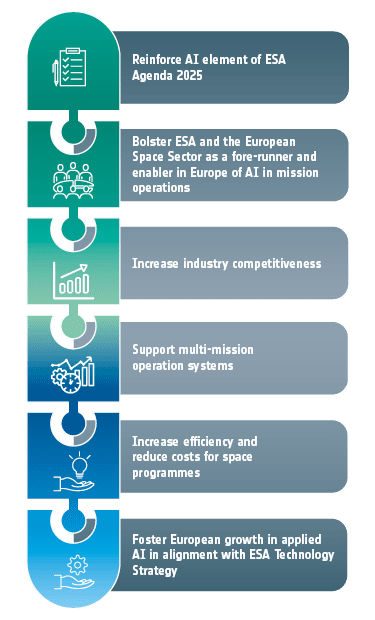High potential of AI for Space Missions
ESA’s ESOC mission operations centre has for years been at the forefront of using artificial intelligence for mission operations applications. The Artificial Intelligence for Automation (A²I) Roadmap will bring the benefits of AI automation solutions to a wider audience and ensure that they meet the needs of European industry.
The A²I Roadmap was developed by over 70 specialists at ESOC and supported by an industry consortium.
Implementing the A²I Roadmap will entail the investigation and development of AI-based solutions for automating a broad range of mission operations activities. Among others, these include predictive infrastructure maintenance, mission planning, operational simulation, mission operations systems testing and validation, spacecraft health monitoring, problem diagnosis, and the recommendation of actions to spacecraft operators.
With the primary aim of fostering European Space Sector growth in the use of applied AI in mission operations, the A²I Roadmap also introduces a range of additional benefits, as depicted in the infographic below.
A²I Roadmap Benefits

5 prioritised domains
Mission operations encompass many different tasks and activities, from mission analysis, flight dynamics and operations preparation, to developing operations simulators and monitoring and planning satellites and ground stations.
The A2I Roadmap team performed a detailed analysis of the estimated impact of a large number of use cases in which AI could be applied to mission operations, using activities at ESOC as a point of reference.
The team assessed the technological maturity and feasibility of each use case, as well as the potential for synergies between cases to maximise their cross-development, reduce deployment time and ease scaling. Five mission operations domains were prioritised as a result.
The analyses revealed that AI can significantly support the automation of mission operations by increasing efficiency and reducing overall workload, freeing up mission operators from mundane and repetitive tasks.

7 AI categories
In addition to grouping by mission operations domain, the use cases can be grouped by the way in which AI is used to bring value. Seven distinct categories emerged:
Automated diagnostics – automatic AI-based analysis of past and current data to find new patterns and correlations, such as outlier and failure detection, root-cause investigation and validation.
AI-enhanced modelling – further improvement of classical models to improve accuracy and precision.
AI enabler – support for other use cases through the generation of high quality data, improvement of user interfaces and data visualisation.
Decision recommendation engine – provision of intelligent recommendations and decision-making assistance for activities such as anomaly handling, procedure and test generation, ground station pass planning and maintenance.
Automated content generation – automatic generation of documents, procedures, and test cases based on sources such as historical reports, logs and technical documents.
Automated prognostics – automated forecasting for the detection and prediction of upcoming events based on previously unknown parameter correlations, such as for satellite health forecasting, planning and failure predictions.
Visually enhanced simulation – augmentation of system simulations and their interactions with the environment, such as spacecraft digital twins in mission simulation and during mission operations.


1st prototype for AI in space mission operations
AI assistant to support decision making of Flight Control Teams
